Quantitative Detection of Clogging in Horizontal Subsurface Flow Constructed Wetland Using the Resistivity Method
Abstract
1. Introduction
2. Materials and Methods
2.1. Measurement of Apparent Resistivity
2.2. Experimental Setup
2.3. Measurement of Void Space, Water Content, and Hydraulic Conductivity
2.4. Statistical Analysis
3. Results and Discussion
3.1. Apparent Resistivity of Wetland Mediums
3.2. Effect of the Degree of Clogging on Apparent Resistivity
3.3. Mathematical Model
3.4. In Situ Detection of Clogging in a Lab-Scale HSSF CW
4. Conclusions
Supplementary Materials
Author Contributions
Funding
Conflicts of Interest
References
- Zhang, X.; Hu, Z.; Ngo, H.H.; Zhang, J.; Guo, W.; Liang, S.; Xie, H. Simultaneous improvement of waste gas purification and nitrogen removal using a novel aerated vertical flow constructed wetland. Water Res. 2017, 130, 79–87. [Google Scholar] [CrossRef] [PubMed]
- Zhang, S.Y.; Williams, P.N.; Luo, J.; Zhu, Y.G. Microbial mediated arsenic biotransformation in wetlands. Front. Env. Sci. Eng. 2017, 11, 1–11. [Google Scholar] [CrossRef]
- Sun, H.; Hu, Z.; Zhang, J.; Wu, W.; Liang, S.; Lu, S.; Liu, H. Determination of hydraulic flow patterns in constructed wetlands using hydrogen and oxygen isotopes. J. Mol. Liq. 2016, 223, 775–780. [Google Scholar] [CrossRef]
- Knowles, P.; Dotro, G.; Nivala, J.; García, J. Clogging in subsurface-flow treatment wetlands: Occurrence and contributing factors. Ecol. Eng. 2011, 37, 99–112. [Google Scholar] [CrossRef]
- Nivala, J.; Knowles, P.; Dotro, G.; García, J.; Wallace, S. Clogging in subsurface-flow treatment wetlands: Measurement, modeling and management. Water Res. 2012, 46, 1625–1640. [Google Scholar] [CrossRef] [PubMed]
- Pedescoll, A.; Corzo, A.; Álvarez, E.; García, J.; Puigagut, J. The effect of primary treatment and flow regime on clogging development in horizontal subsurface flow constructed wetlands: An experimental evaluation. Water Res. 2011, 45, 3579–3589. [Google Scholar] [CrossRef] [PubMed]
- Pedescoll, A.; Uggetti, E.; Llorens, E.; Granés, F.; García, D.; García, J. Practical method based on saturated hydraulic conductivity used to assess clogging in subsurface flow constructed wetlands. Ecol. Eng. 2009, 35, 1216–1224. [Google Scholar] [CrossRef]
- Pedescoll, A.; Samsó, R.; Romero, E.; Puigagut, J.; García, J. Reliability, repeatability and accuracy of the falling head method for hydraulic conductivity measurements under laboratory conditions. Ecol. Eng. 2011, 37, 754–757. [Google Scholar] [CrossRef]
- Knowles, P.; Griffin, P.; Davies, P.A. Complementary methods to investigate the development of clogging within a horizontal sub-surface flow tertiary treatment wetland. Water Res. 2010, 44, 320–330. [Google Scholar] [CrossRef] [PubMed]
- Cooper, D.; Griffin, P.; Cooper, P. Factors affecting the longevity of subsurface horizontal flow systems operating as tertiary treatment for sewage effluent. Water Sci. Technol. 2005, 51, 127–135. [Google Scholar] [CrossRef] [PubMed]
- Shamim, M.; Bencsik, M.; Morris, R.; Newton, M. MRI measurements of dynamic clogging in porous systems using sterilised sludge. Microporous Mesoporous Mater. 2013, 178, 48–52. [Google Scholar] [CrossRef]
- Corbella, C.; García, J.; Puigagut, J. Microbial fuel cells for clogging assessment in constructed wetlands. Sci. Total Environ. 2016, 569, 1060–1063. [Google Scholar] [CrossRef] [PubMed]
- Samouëlian, A.; Cousin, I.; Tabbagh, A.; Bruand, A.; Richard, G. Electrical resistivity survey in soil science: A review. Soil Tillage Res. 2005, 83, 173–193. [Google Scholar] [CrossRef]
- Chrétien, M.; Lataste, J.; Fabre, R.; Denis, A. Electrical resistivity tomography to understand clay behavior during seasonal water content variations. Eng. Geol. 2014, 169, 112–123. [Google Scholar] [CrossRef]
- Siriwardene, N.; Deletic, A.; Fletcher, T. Clogging of stormwater gravel infiltration systems and filters: Insights from a laboratory study. Water Res. 2007, 41, 1433–1440. [Google Scholar] [CrossRef] [PubMed]
- Perrone, A.; Lapenna, V.; Piscitelli, S. Electrical resistivity tomography technique for landslide investigation: A review. Earth-Sci. Rev. 2014, 135, 65–82. [Google Scholar] [CrossRef]
- Scudiero, E.; Skaggs, T.H.; Corwin, D.L. Comparative regional-scale soil salinity assessment with near-ground apparent electrical conductivity and remote sensing canopy reflectance. Ecol. Indic. 2016, 70, 276–284. [Google Scholar] [CrossRef]
- Kalinski, R.J.; Kelly, W.E. Estimating water content of soils from electrical resistivity. Geotech. Test. J. 1993, 16, 323–329. [Google Scholar] [CrossRef]
- Angst, U.M.; Elsener, B. On the Applicability of the Wenner Method for Resistivity Measurements of Concrete. ACI Mater. J. 2014, 111, 661–672. [Google Scholar] [CrossRef]
- Faleiro, E.; Asensio, G.; Moreno, J. Improved measurements of the apparent resistivity for small depths in Vertical Electrical Soundings. J. Appl. Geophys. 2016, 131, 117–122. [Google Scholar] [CrossRef]
- Wang, L.; Zheng, Z.; Luo, X.; Zhang, J. Performance and mechanisms of a microbial-earthworm ecofilter for removing organic matter and nitrogen from synthetic domestic wastewater. J. Hazard. Mater. 2011, 195, 245–253. [Google Scholar] [CrossRef] [PubMed]
- Hua, G.; Zeng, Y.; Zhao, Z.; Cheng, K.; Chen, G. Applying a resting operation to alleviate bioclogging in vertical flow constructed wetlands: An experimental lab evaluation. J. Environ. Manag. 2014, 136, 47–53. [Google Scholar] [CrossRef] [PubMed]
- García-Bernet, D.; Buffière, P.; Latrille, E.; Steyer, J.P.; Escudié, R. Water distribution in biowastes and digestates of dry anaerobic digestion technology. Chem. Eng. J. 2011, 172, 924–928. [Google Scholar] [CrossRef]
- Noborio, K. Measurement of soil water content and electrical conductivity by time domain reflectometry: A review. Comput. Electron. Agric. 2001, 31, 213–237. [Google Scholar] [CrossRef]
- Basso, A.S.; Miguez, F.E.; Laird, D.A.; Horton, R.; Westgate, M. Assessing potential of biochar for increasing water-holding capacity of sandy soils. GCB Bioenergy 2013, 5, 132–143. [Google Scholar] [CrossRef]
- Mungray, A.K.; Kumar, P. Degradation of anionic surfactants during drying of UASBR sludges on sand drying beds. J. Environ. Manage. 2008, 88, 995–1002. [Google Scholar] [CrossRef] [PubMed]
- Zentar, R.; Miraoui, M.; Abriak, N.E.; Benzerzour, M. Natural dewatering of marine dredged sediments. Dry. Technol. 2011, 29, 1705–1713. [Google Scholar] [CrossRef]
- Ozcep, F.; Yıldırım, E.; Tezel, O.; Asci, M.; Karabulut, S. Correlation between electrical resistivity and soil-water content based artificial intelligent techniques. Int. J. Phys. Sci. 2010, 5, 47–56. [Google Scholar] [CrossRef]
- Caselles-Osorio, A.; Puigagut, J.; Segú, E.; Vaello, N.; Granés, F.; García, D.; García, J. Solids accumulation in six full-scale subsurface flow constructed wetlands. Water Res. 2007, 41, 1388–1398. [Google Scholar] [CrossRef] [PubMed]
- Minagawa, H.; Miyamoto, S.; Hisada, M. Relationship of Apparent Electrical Resistivity Measured by Four-Probe Method with Water Content Distribution in Concrete. J. Adv. Concr. Technol. 2017, 15, 278–289. [Google Scholar] [CrossRef]
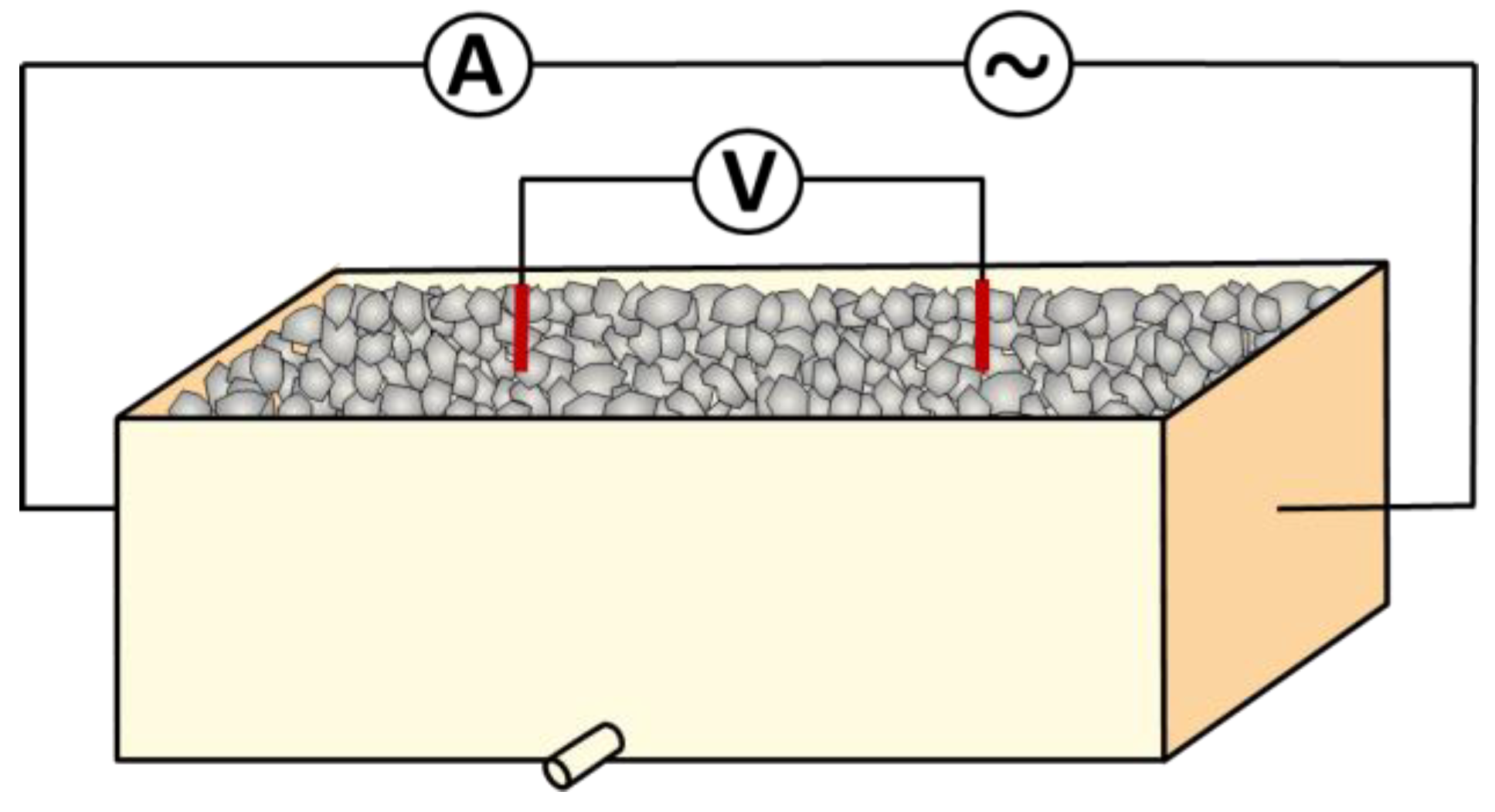
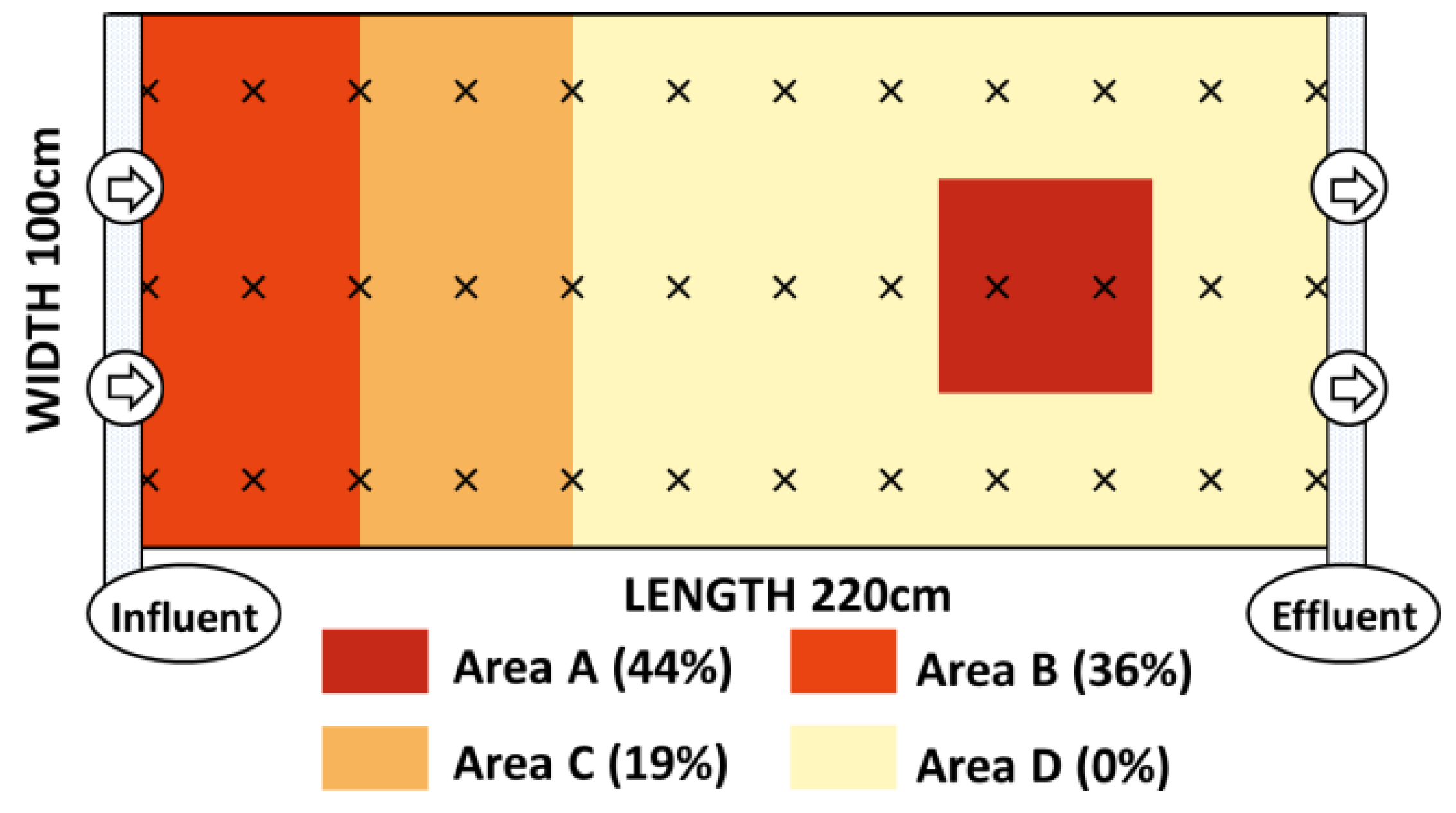
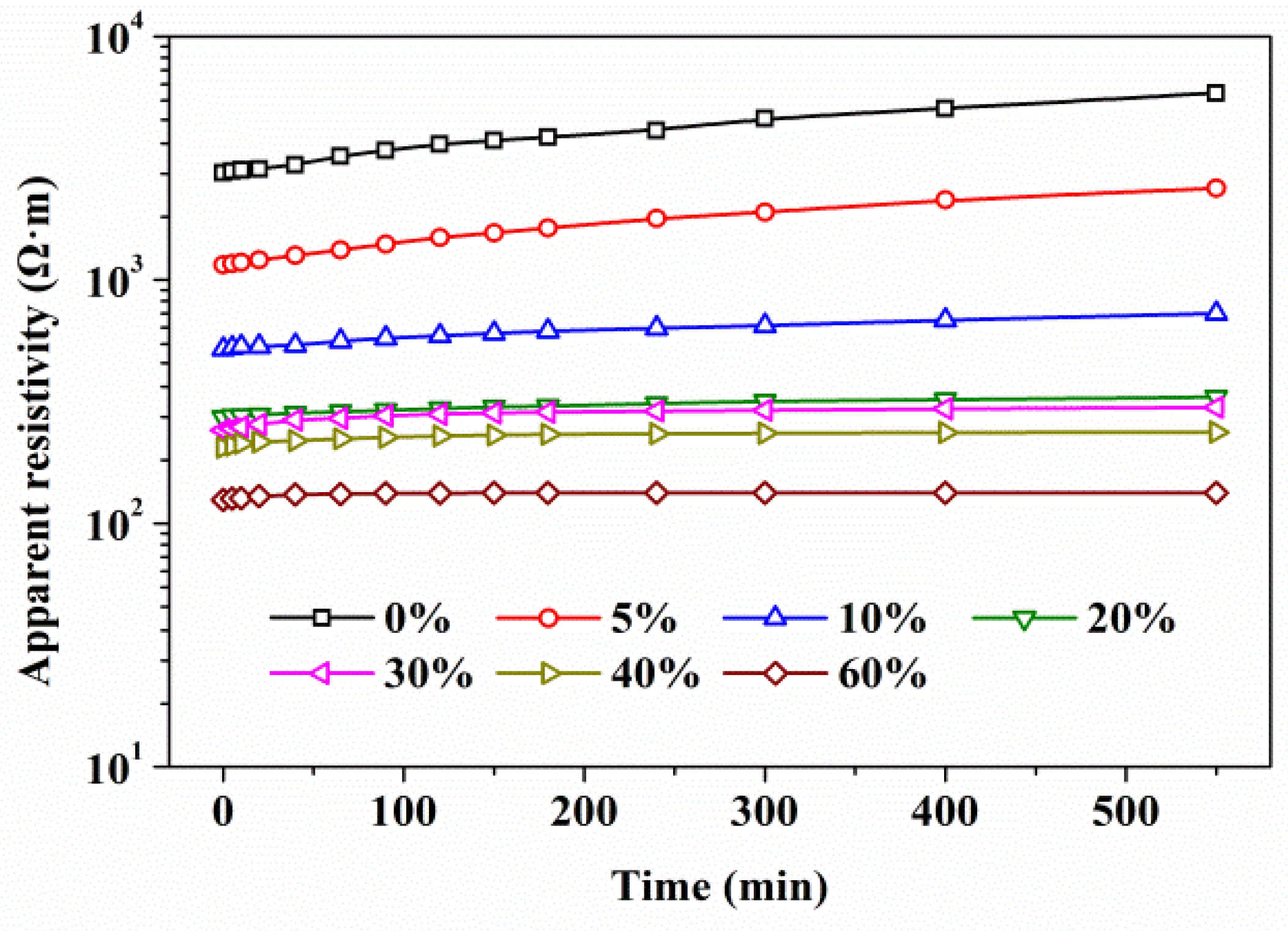

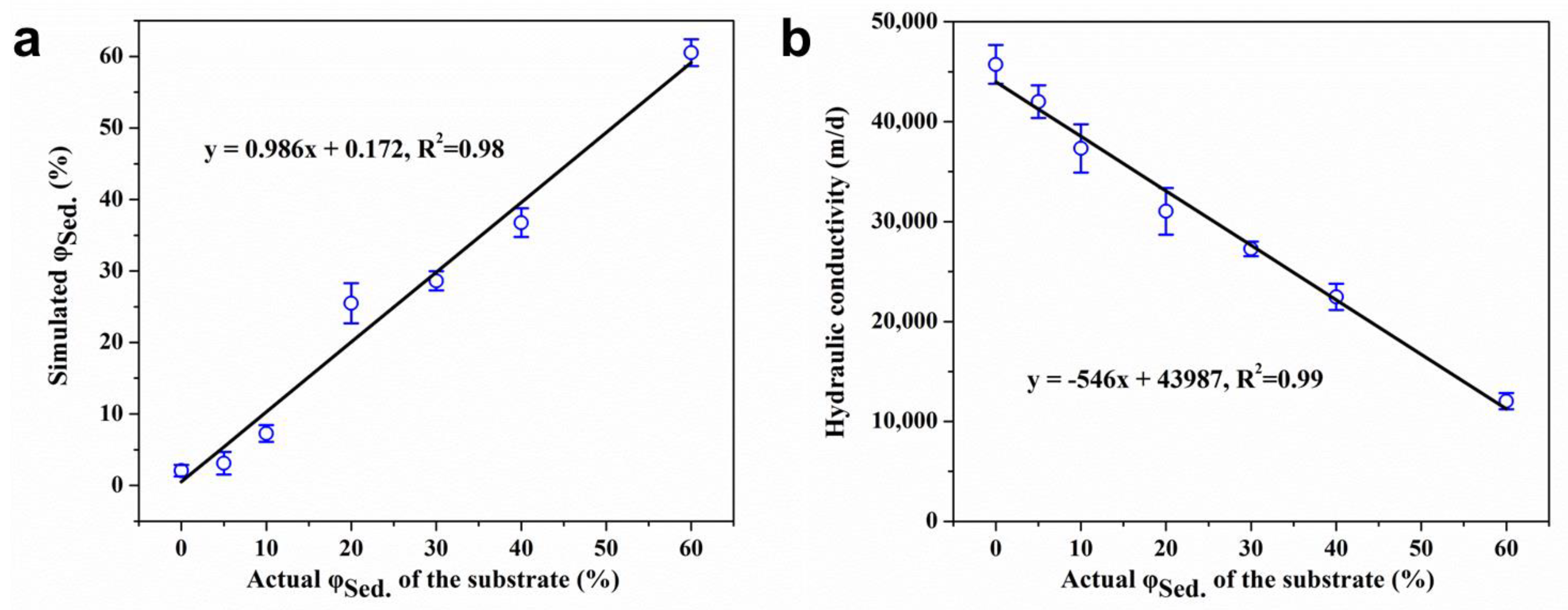
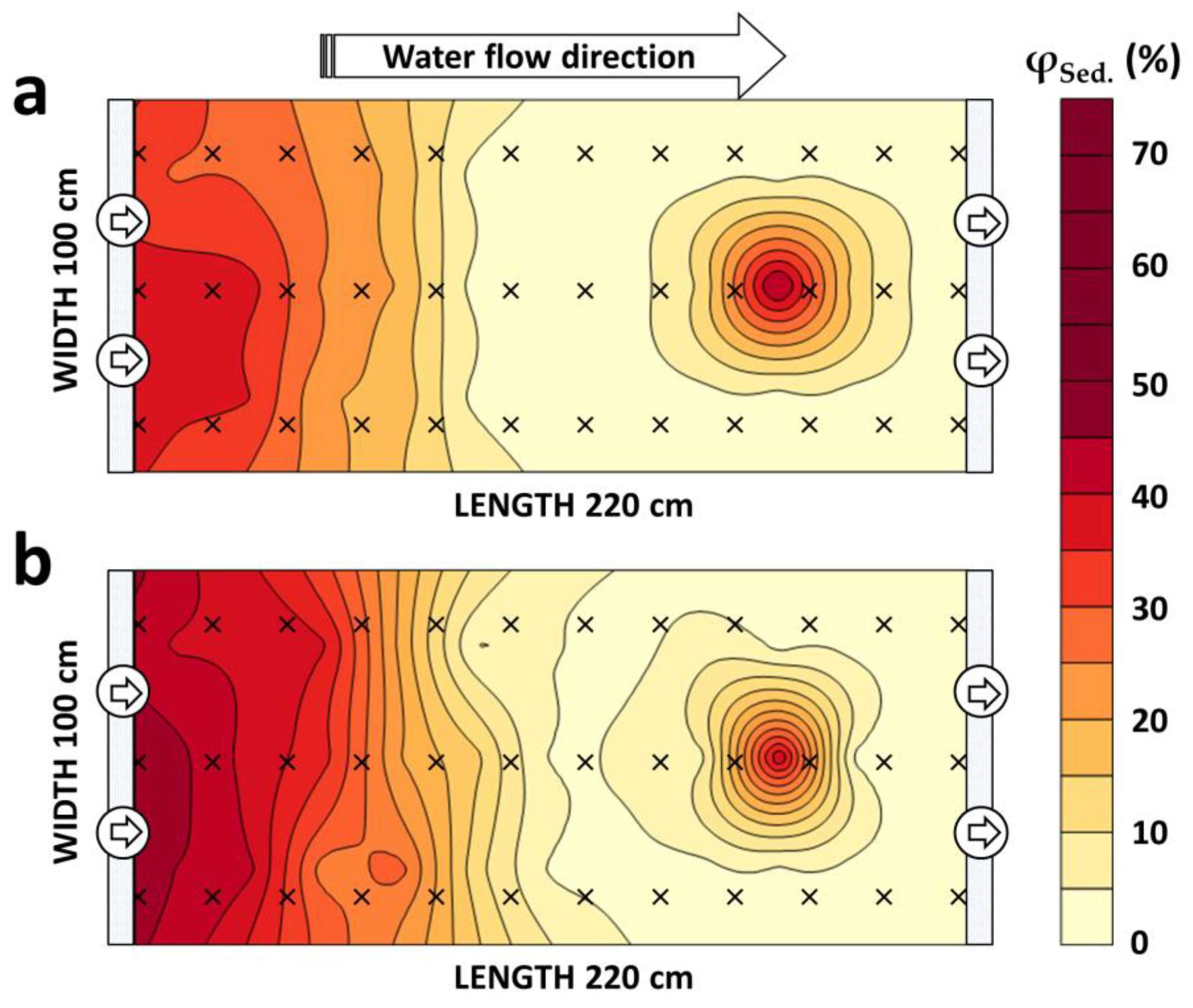
| Index | COD 1 (mg/L) | BOD5 2 (mg/L) | TSS 3 (mg/L) | Temperature (°C) | pH | Conductivity (μS/cm) |
|---|---|---|---|---|---|---|
| Values | 253.8 ± 16.5 | 198.3 ± 13.0 | 69.0 ± 6.2 | 24.0 ± 2.7 | 7.5 ± 0.2 | 1752 ± 26.1 |
| Index | Gravel | Sediment | Mixture 1 |
|---|---|---|---|
| Filling phase (Ω·m) | 29.8 ± 5.0 | 66.6 ± 5.2 | 34.4 ± 2.1 |
| Draining phase (Ω·m) | 3174.8 ± 73.4 | 87.4 ± 7.6 | 132.1 ± 10.6 |
© 2018 by the authors. Licensee MDPI, Basel, Switzerland. This article is an open access article distributed under the terms and conditions of the Creative Commons Attribution (CC BY) license (http://creativecommons.org/licenses/by/4.0/).
Share and Cite
Liu, H.; Hu, Z.; Song, S.; Zhang, J.; Nie, L.; Hu, H.; Li, F.; Liu, Z. Quantitative Detection of Clogging in Horizontal Subsurface Flow Constructed Wetland Using the Resistivity Method. Water 2018, 10, 1334. https://doi.org/10.3390/w10101334
Liu H, Hu Z, Song S, Zhang J, Nie L, Hu H, Li F, Liu Z. Quantitative Detection of Clogging in Horizontal Subsurface Flow Constructed Wetland Using the Resistivity Method. Water. 2018; 10(10):1334. https://doi.org/10.3390/w10101334
Chicago/Turabian StyleLiu, Huaqing, Zhen Hu, Shiying Song, Jian Zhang, Lichao Nie, Hongying Hu, Fengmin Li, and Zhengyu Liu. 2018. "Quantitative Detection of Clogging in Horizontal Subsurface Flow Constructed Wetland Using the Resistivity Method" Water 10, no. 10: 1334. https://doi.org/10.3390/w10101334
APA StyleLiu, H., Hu, Z., Song, S., Zhang, J., Nie, L., Hu, H., Li, F., & Liu, Z. (2018). Quantitative Detection of Clogging in Horizontal Subsurface Flow Constructed Wetland Using the Resistivity Method. Water, 10(10), 1334. https://doi.org/10.3390/w10101334






